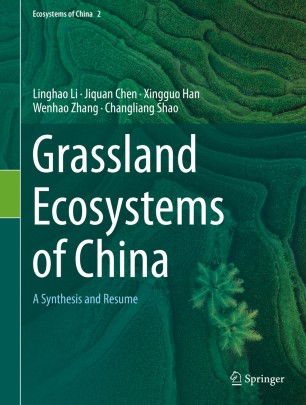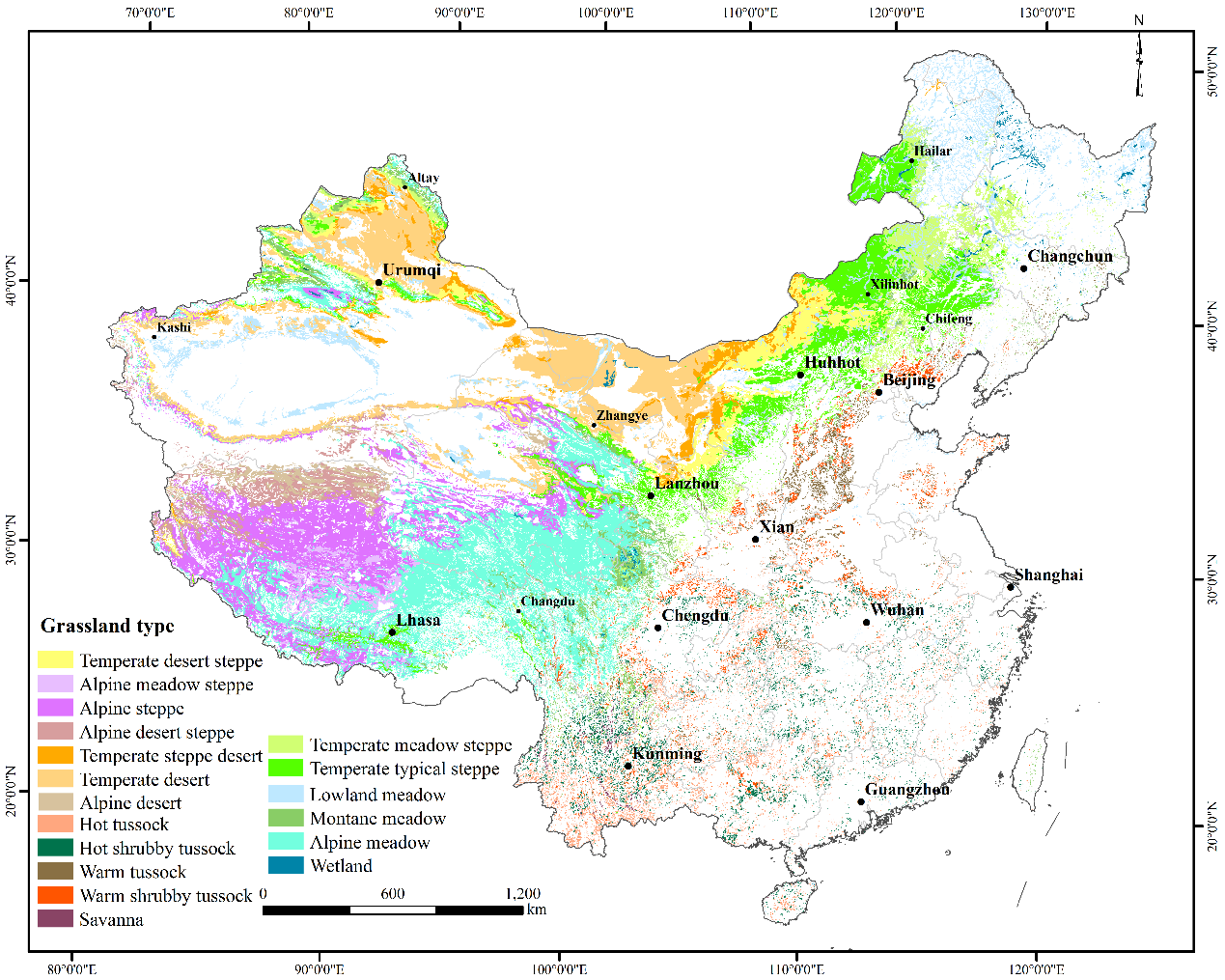Chen Co-Authors Book Enabling International Audience a Detailed Exploration of China's Grassland Ecosystems
October 6, 2020 - Diane Huhn
Jiquan Chen of the Center for Global Change and Earth Observations (CGCEO) and the Department of Geography, Environment, and Spatial Sciences at Michigan State University, has joined several scholars in publishing the first in a planned series of volumes enabling the broader international community to explore the ecosystems of China. This first book, Grassland Ecosystems of China: A Synthesis and Resume, is particularly helpful for those interested in studying China's drylands and provides a comprehensive overview of its grassland ecosystems.
 Before the publication of this volume, a comprehensive overview of the topic has not been widely available to an English-speaking audience. Although numerous scholarly works have been published since the 1930s, particularly about the flora of China's grasslands, the overwhelming majority of this literature has been published in Chinese and, therefore, not widely utilized by an international scientific audience.
Before the publication of this volume, a comprehensive overview of the topic has not been widely available to an English-speaking audience. Although numerous scholarly works have been published since the 1930s, particularly about the flora of China's grasslands, the overwhelming majority of this literature has been published in Chinese and, therefore, not widely utilized by an international scientific audience.
In preparing the content for this volume, the primary author, Dr. Linghao Li of the State Key Laboratory of Vegetation and Environmental Change Institute of Botany in Beijing, China, compiled more than 10,000 scholarly publications. "Although we did not contribute as much as Dr. Li to this project, the critical work he undertook enabled the fellow co-authors to translate and synthesize this rich body of literature and data for an audience that up until now has really known very little about what China actually has," said Dr. Chen. "As far as I am aware, this is one of the first nature books published in English with detailed information and data about the plants, animals, and microbes for all of the grasslands in China."
In addition, the authors also introduce a new classification scheme for China's grassland ecosystems, and several chapters are devoted to detailed descriptions of these various types of grasslands and their distribution across China. "Since the 1930s, work in this field has been sporadic and not well-coordinated due to various socio-cultural and political events impacting China through the years. As a result, scientific work in China has come under the influence of various systems, including those from Europe, the US, and the former Soviet Union," said Chen. "Over time, this has created a bit of a mismatch and inconsistency. We designed the classification system introduced in the book to align with the American system, which has become dominant over the last twenty years."

In addition to the climatic and physical conditions that govern each type of grassland, and the plant, animal, and microbial compositions of each ecosystem type, the authors offer an examination of the above and below ground relationships between phytomass, vegetation succession, and past and current management practices with a particular focus on the steppes in China.
"I hope that this and future volumes will provide greater resources for the international community to understand China's ecosystems, which play a fundamental role in global change science," said Chen. "You cannot study global change without understanding what China has."
Chen, Professor of Geography and recipient of the 2020 Williams J Beal Outstanding Faculty Award, is a native of Shanxi in northern China. He is the director of the Landscape Ecology & Ecosystem Science Lab (LEES Lab). His research and academic instruction focus on ecosystem processes and their interactive feedback to biophysical and human activities. His current research lies in the coupled effects of global climate change and human activities on terrestrial ecosystems, global change ecology, bioenergy, and carbon/water fluxes. He is the founder and chief scientist of the US-China Carbon Consortium (USCCC). He is also a member of the Ecology, Evolutionary Biology, and Behavior (EEBB) Graduate Program and the Environmental Science & Policy Program (ESPP).
Grassland Ecosystems of China: A Synthesis and Resume is published by Springer Nature Singapore. For more information, please visit https://bit.ly/3nm7Aoo. Volumes exploring China's forests, croplands, and other significant biomes are planned for future publication.

